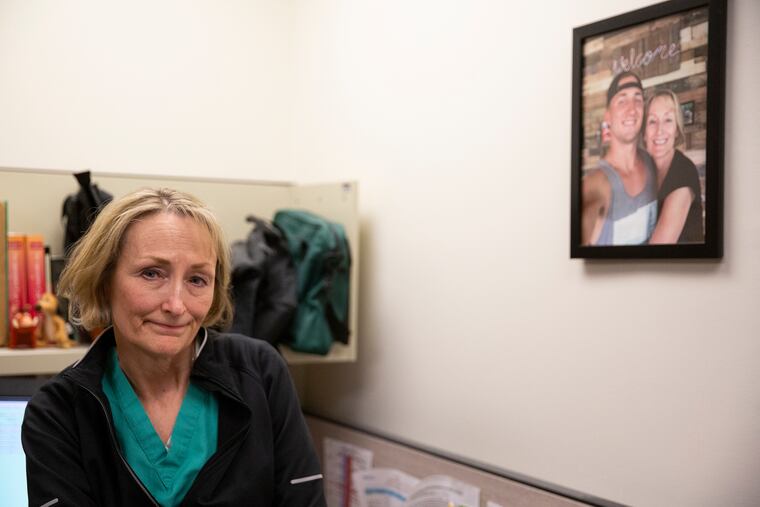Doctor who lost a son to overdose: ‘Philly needs Safehouse now’ | Opinion
On the day my youngest son died of an accidental fentanyl overdose in Queen Village, there wasn’t an established supervised injection site or Safehouse, a nonprofit aimed at opening such a site, in the city.

On the day my youngest son died of an accidental fentanyl overdose in Queen Village, there wasn’t an established supervised injection site or Safehouse, a nonprofit aimed at opening such a site, in the city.
Today, almost two years later, there still isn’t — despite evidence that suggests such options would help save lives in Philadelphia, where more than 1,100 people died from an opioid-related overdose in 2018.
City and state-led efforts, including expanded access to the overdose-reversal drug naloxone, resulted in a much-needed infusion of resources that have better equipped residents to respond in emergency situations. To that end, the city saw a slight decline — 8% — in overdose deaths from 2017 to 2018, representing a small step forward.
But addressing this crisis requires a multifaceted approach — and expanding access to naloxone is just one part of the solution. And while I urge people — particularly family members and friends of those with opioid use disorder — to develop at-home action plans, there’s a marked difference between responding to an unexpected emergency at home vs. what happens at a supervised injection site. For example, at home, the person doesn’t warn you that he or she is about to use and there is no access to clean needles or testing for the presence of fentanyl, a deadly synthetic opioid, in the drug before use. Instead, shame and fear of retribution keep this within the solitude of the bathroom or bedroom, usually behind a locked door.
But let’s get to the facts. There is not a single recorded death following drug use at any supervised injection site worldwide. None. This alone should be the strongest argument to support Safehouse in a city with an open-air drug market and one of the highest opioid death rates in the country.
Yet, the federal government continues to prevent Safehouse from opening in Philadelphia. This week in federal court, U.S. Attorney William McSwain will argue that supervised injection sites are illegal under current federal law, called the “crack house statute,” which forbids the operation of a facility for drug use or sales. But the law is outdated and ill designed. The “sole purpose” of a supervised injection site is not for drug use, but rather saving lives, reducing harm, and offering the hope of recovery.
Morality rather than rationality seem to be playing a major factor in preventing Safehouse from legally opening. Addiction is a common causal factor in many diseases that I treat. Whether it is addiction to food leading to obesity and heart disease, to cigarettes leading to COPD and lung cancer, or to alcohol leading to alcoholism, these diseases are somehow morally acceptable and treated with compassion. But drug addiction still carries a strong, morally offensive stain. Remove morality from the equation and rational decisions can prevail.
If the federal lawyers had a child or spouse suffering in the grips of opioid addiction and had seen what I have seen, I know that they would have clarity of vision and practicality would ensue. The law needs to be repealed or amended. Details about implementation can be worked out.
And what about Kensington, where Safehouse locations have been proposed? Some individuals in the area are strongly opposed, but their concerns can readily be addressed. Safehouse is privately funded and will not take away funds from local residents. Additionally, studies confirm that a supervised injection site does not increase local crime, but rather decreases open-air drug use, decreases disposed needles, and decreases public disorder complaints.
The hardworking residents of Kensington may be reluctant to have their community marked with a “Scarlet Letter.” They may view it as a declaration that Safehouse is here because Kensington is the drug capital of the U.S. Instead, I see those residents as being the innovators, the forward-thinking people who never back down from a challenge. Philly proud. Kensington could be the first in the country.
What about NIMBY: not in my back yard? I would welcome a supervised injection site on Main Street in my neighborhood of Yardley. No, Yardley is not Kensington. I have driven through your streets looking for my son. The corners of Weymouth and Allegheny or Cambria and Indiana were popular search areas. I have seen some of your challenges and I sympathize. Bucks County has its own opioid issues.
Had my son used at a Safehouse in Philly that day, there is no doubt that he would have survived. Statistics prove me right. He would have been 28 years old.
Now is the time for Philly to be the first to legally, or otherwise, welcome Safehouse.
Bonnie Milas is a professor of clinical anesthesiology and critical care in the Perelman School of Medicine at the University of Pennsylvania. The opinions expressed in this article do not represent those of the University of Pennsylvania Health System or the Perelman School of Medicine at the University of Pennsylvania.